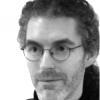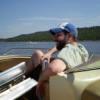I'm sure that many of you are eagerly awaiting the publication of Technology Review's "SENS Challenge" article. If you are expecting Aubrey to deconstruct his detractors' arguments in typical style then you will not be disappointed. Neither will you discover that his critics have revealed any new dimensions of biology that undermine SENS. Same old, same old as they say.. And another glorious victory for SENS and its supporters.
Since those criticisms and rebuttals were written (and will shortly be published) however, some interesting studies have been reported that stand to obliterate one of the pillars on which SENS is founded:
1. Proc Natl Acad Sci U S A. 2006 May 16;103(20):7753-8.
Transferable anticancer innate immunity in spontaneous regression/complete resistance mice.
Hicks AM, Riedlinger G, Willingham MC, Alexander-Miller MA, Von Kap-Herr C, Pettenati MJ, Sanders AM, Weir HM, Du W, Kim J, Simpson AJ, Old LJ, Cui Z.
2. Hum Mol Genet. 2006 Jun 1;15(11):1757-68.
Mitochondrial localization of telomerase as a determinant for hydrogen peroxide-induced mitochondrial DNA damage and apoptosis.
Santos JH, Meyer JN, Van Houten B.
The first article reports on a strain of mouse that is completely resistant to cancer and from whom cancer resistance is transferable by a process as simple as a blood transfusion. The second article reports on the discovery that telomerase acts as a stem cell quality control mechanism - in its absence a stem cell's genome would become increasingly vulnerable to propagating cancer causing mutations.
Also of note is another recent study:
3. Curr Biol. 2006 May 23;16(10):R359-60.
Gene expression becomes heterogeneous with age.
Somel M, Khaitovich P, Bahn S, Paabo S, Lachmann M.
Here we see evidence that as aging progresses a decrease in specific expression of genes occurs. In effect cells slowly lose their identity as they become more random in their gene expression. The consequences are a loss of tissue/organ function and increased risk of cancer. Such stochastic changes in gene expression could well be a result of accumulation of nuclear DNA (nDNA) damage due to insufficient repair and maintenance mechanisms.
For those familiar with SENS they would immediately recognise the implication for WILT - the SENS approach of dealing with cancer - as being made both redundant (1) and dangerous (2) by these findings. This is no cause for alarm though, since these findings also promise that innate immunity can deal with cancer and that telomerase can once more be considered as a safe means of extending functional cell lifespan. The third study mentioned underlines that nDNA damage can play a greater role than just increasing the risk of cancer but also contributes to tissue/organ dysfunction.
What do these studies tell us? Firstly, that it is time to critically re-examine the usefullness of WILT in the SENS collective and secondly to consider that nDNA damage contributes more to aging than cancer and therefore requires to be addressed as such.














































